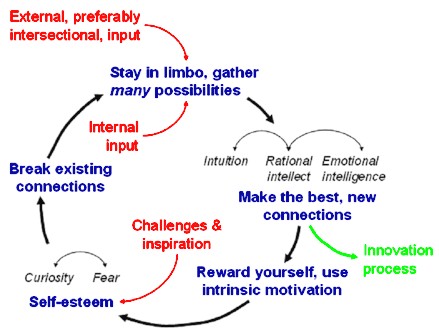 Bengt J”rrehult, the KM Director for Swedish paper & packaging company Svenska Cellulosa Aktiebolaget, has come up with a model for creativity that synthesizes some of the more analytical approaches with some more right-brain approaches like those in Creativity Inc, by Jeff Mauzy & Richard Harriman, and Presence, the book by Senge et al that I recently reviewed. Creativity Inc outlines creativity practices that entail learning new competencies, establishing a facilitating environment, and offering creativity programs. The keys to creativity, its authors say, are intrinsic motivation, curiosity, making and breaking connections, and honest idea evaluation. Bengt explains his cycle, diagrammed above, as follows:
Not coincidentally, there is a lot of the ‘suspending’ and ‘letting go’ elements of the Presence model in Bengt’s model. This is a personal creative process. Now let’s put it together with the organizational creative and innovation process we developed for AHA!:
So, to reiterate Bengt’s personal creativity cycle, we, as individuals, (1) draw inspiration, (2) exercise personal courage, (3) break connections, (4) open ourselves to input from without and within, (5) draw on intuition, emotional intelligence and rational intellect to create new connections, and (6) feel the reward — the joy that this creative process gives us (outer circles of this chart). Creative organizations invite us to apply this creative process to organizational creative and innovative tasks. In organizational creative work, we collectively (a) learn, (b) listen/observe, (c) explore, (d) understand, (e) organize, (f) imagine, (g) reach out, and (h) brainstorm (leftmost 8 boxes of the inner circle of this chart). In organizational innovation work, we collectively (i) canvass the ‘crowd’ for confirmation that our ideas meet a genuine need, (j) design, (k) experiment, (l) question/challenge, and (m) realize the idea into a successful offering (rightmost 5 boxes of inner circle of this chart). All six elements of individual creativity in Bengt’s model are applied in all 13 aspects of the organizational creative and innovation process. These are both cycles, and ideas and actions pass through their intersections and give them momentum dynamically, much as electrons are exchanged in chemical reactions. For example, you might be reading about a new type of plastic that dissolves inertly in water, and later about the problems with sorting and recycling of packaging materials (individual creativity cycle step 4). You connect the two learnings together (step 5), and get excited about the possibilities (step 6). You are inspired (step 1) to invent a packaging material that can safely be washed down the sink. You overcome the fear of being thought foolish for such a radical idea, the fear that someone has probably already patented it, the fear that nothing plastic can really ever be harmless to the environment (step 2), and are propelled by your courage to start thinking boldly about the possible applications of such a technology in all kinds of packaging (step 3). At any point in this personal cycle, you may be drawn into, or create, an organizational group that can explore this idea and do what needs to be done to bring it to fruition. It might start with learning from a business colleague more about plastics, and sharing what you know so far (step a), or a casual brainstorming with trusted colleagues over lunch (step h). Someone in the organization may hear about your exploration and authorize a group to explore it (step b), or to design a prototype (step j & k). The personal creative cycle can thus intersect with and be propelled by the organizational creative and innovation cycle at almost any point, and vice versa. Some of the articles I have been reading lately (notably this one by innovation guru Michael Schrage suggest that there may be three more steps in the innovation cycle between (i) canvass and (j) design:
That would increase to 16 the number of steps in the group/organizational cycle. I welcome comments from readers on this revision to our model, and how to integrate it with Bengt’s in a graphic way that is not overwhelming to understand. Why is there so little innovation in most organizations today, when there is so much creative talent and so many ideas and so much information floating around? My hypothesis: Organizations rarely invite people to apply their personal creativity to organizational challenges, so the available ideas and talent are largely unused and eventually dry up. This is because most organizations (a) are not set up to tap this talent, (b) don’t really trust most of their employees to be able to apply their creative abilities and imagination in a productive, effective way, and (c) are averse to true innovation, as Christensen explains, because their intense focus on customers discourages them from doing anything different from what has satisfied customers to date — i.e. what they’re already doing today.
Organizations are not stupid. They have achieved success by effectively meeting customers’ needs. They are not motivated to change what they’re doing until something averse happens — dropping revenues due to a competitor’s disruptive innovation or a dramatic change in the economy, buying criteria or demographics. Too often, by the time this happens it is too late. Successful organizations should be anticipating such averse events and bringing either sustaining innovations or disruptive innovations of their own to preempt such events. They should be putting in place an environment that encourages their employees and others (including customers) to apply their personal creative skills to help in that effort. And they should trust their employees and customers to be a vital force in the organization’s innovation efforts, and put in place programs to demonstrate that trust and tap that creative talent. Failure to do so represents not only a squandered opportunity and a waste of talent, but also guarantees that most of your employees will be bored, disengaged and disinterested in the organization’s success beyond their own personal interest, and likewise guarantees a largely indifferent and unloyal customer base. |
Navigation
Collapsniks
Albert Bates (US)
Andrew Nikiforuk (CA)
Brutus (US)
Carolyn Baker (US)*
Catherine Ingram (US)
Chris Hedges (US)
Dahr Jamail (US)
Dean Spillane-Walker (US)*
Derrick Jensen (US)
Dougald & Paul (IE/SE)*
Erik Michaels (US)
Gail Tverberg (US)
Guy McPherson (US)
Honest Sorcerer
Janaia & Robin (US)*
Jem Bendell (UK)
Mari Werner
Michael Dowd (US)*
Nate Hagens (US)
Paul Heft (US)*
Post Carbon Inst. (US)
Resilience (US)
Richard Heinberg (US)
Robert Jensen (US)
Roy Scranton (US)
Sam Mitchell (US)
Tim Morgan (UK)
Tim Watkins (UK)
Umair Haque (UK)
William Rees (CA)
XrayMike (AU)
Radical Non-Duality
Tony Parsons
Jim Newman
Tim Cliss
Andreas Müller
Kenneth Madden
Emerson Lim
Nancy Neithercut
Rosemarijn Roes
Frank McCaughey
Clare Cherikoff
Ere Parek, Izzy Cloke, Zabi AmaniEssential Reading
Archive by Category
My Bio, Contact Info, Signature Posts
About the Author (2023)
My Circles
E-mail me
--- My Best 200 Posts, 2003-22 by category, from newest to oldest ---
Collapse Watch:
Hope — On the Balance of Probabilities
The Caste War for the Dregs
Recuperation, Accommodation, Resilience
How Do We Teach the Critical Skills
Collapse Not Apocalypse
Effective Activism
'Making Sense of the World' Reading List
Notes From the Rising Dark
What is Exponential Decay
Collapse: Slowly Then Suddenly
Slouching Towards Bethlehem
Making Sense of Who We Are
What Would Net-Zero Emissions Look Like?
Post Collapse with Michael Dowd (video)
Why Economic Collapse Will Precede Climate Collapse
Being Adaptable: A Reminder List
A Culture of Fear
What Will It Take?
A Future Without Us
Dean Walker Interview (video)
The Mushroom at the End of the World
What Would It Take To Live Sustainably?
The New Political Map (Poster)
Beyond Belief
Complexity and Collapse
Requiem for a Species
Civilization Disease
What a Desolated Earth Looks Like
If We Had a Better Story...
Giving Up on Environmentalism
The Hard Part is Finding People Who Care
Going Vegan
The Dark & Gathering Sameness of the World
The End of Philosophy
A Short History of Progress
The Boiling Frog
Our Culture / Ourselves:
A CoVid-19 Recap
What It Means to be Human
A Culture Built on Wrong Models
Understanding Conservatives
Our Unique Capacity for Hatred
Not Meant to Govern Each Other
The Humanist Trap
Credulous
Amazing What People Get Used To
My Reluctant Misanthropy
The Dawn of Everything
Species Shame
Why Misinformation Doesn't Work
The Lab-Leak Hypothesis
The Right to Die
CoVid-19: Go for Zero
Pollard's Laws
On Caste
The Process of Self-Organization
The Tragic Spread of Misinformation
A Better Way to Work
The Needs of the Moment
Ask Yourself This
What to Believe Now?
Rogue Primate
Conversation & Silence
The Language of Our Eyes
True Story
May I Ask a Question?
Cultural Acedia: When We Can No Longer Care
Useless Advice
Several Short Sentences About Learning
Why I Don't Want to Hear Your Story
A Harvest of Myths
The Qualities of a Great Story
The Trouble With Stories
A Model of Identity & Community
Not Ready to Do What's Needed
A Culture of Dependence
So What's Next
Ten Things to Do When You're Feeling Hopeless
No Use to the World Broken
Living in Another World
Does Language Restrict What We Can Think?
The Value of Conversation Manifesto Nobody Knows Anything
If I Only Had 37 Days
The Only Life We Know
A Long Way Down
No Noble Savages
Figments of Reality
Too Far Ahead
Learning From Nature
The Rogue Animal
How the World Really Works:
Making Sense of Scents
An Age of Wonder
The Truth About Ukraine
Navigating Complexity
The Supply Chain Problem
The Promise of Dialogue
Too Dumb to Take Care of Ourselves
Extinction Capitalism
Homeless
Republicans Slide Into Fascism
All the Things I Was Wrong About
Several Short Sentences About Sharks
How Change Happens
What's the Best Possible Outcome?
The Perpetual Growth Machine
We Make Zero
How Long We've Been Around (graphic)
If You Wanted to Sabotage the Elections
Collective Intelligence & Complexity
Ten Things I Wish I'd Learned Earlier
The Problem With Systems
Against Hope (Video)
The Admission of Necessary Ignorance
Several Short Sentences About Jellyfish
Loren Eiseley, in Verse
A Synopsis of 'Finding the Sweet Spot'
Learning from Indigenous Cultures
The Gift Economy
The Job of the Media
The Wal-Mart Dilemma
The Illusion of the Separate Self, and Free Will:
No Free Will, No Freedom
The Other Side of 'No Me'
This Body Takes Me For a Walk
The Only One Who Really Knew Me
No Free Will — Fightin' Words
The Paradox of the Self
A Radical Non-Duality FAQ
What We Think We Know
Bark Bark Bark Bark Bark Bark Bark
Healing From Ourselves
The Entanglement Hypothesis
Nothing Needs to Happen
Nothing to Say About This
What I Wanted to Believe
A Continuous Reassemblage of Meaning
No Choice But to Misbehave
What's Apparently Happening
A Different Kind of Animal
Happy Now?
This Creature
Did Early Humans Have Selves?
Nothing On Offer Here
Even Simpler and More Hopeless Than That
Glimpses
How Our Bodies Sense the World
Fragments
What Happens in Vagus
We Have No Choice
Never Comfortable in the Skin of Self
Letting Go of the Story of Me
All There Is, Is This
A Theory of No Mind
Creative Works:
Mindful Wanderings (Reflections) (Archive)
A Prayer to No One
Frogs' Hollow (Short Story)
We Do What We Do (Poem)
Negative Assertions (Poem)
Reminder (Short Story)
A Canadian Sorry (Satire)
Under No Illusions (Short Story)
The Ever-Stranger (Poem)
The Fortune Teller (Short Story)
Non-Duality Dude (Play)
Your Self: An Owner's Manual (Satire)
All the Things I Thought I Knew (Short Story)
On the Shoulders of Giants (Short Story)
Improv (Poem)
Calling the Cage Freedom (Short Story)
Rune (Poem)
Only This (Poem)
The Other Extinction (Short Story)
Invisible (Poem)
Disruption (Short Story)
A Thought-Less Experiment (Poem)
Speaking Grosbeak (Short Story)
The Only Way There (Short Story)
The Wild Man (Short Story)
Flywheel (Short Story)
The Opposite of Presence (Satire)
How to Make Love Last (Poem)
The Horses' Bodies (Poem)
Enough (Lament)
Distracted (Short Story)
Worse, Still (Poem)
Conjurer (Satire)
A Conversation (Short Story)
Farewell to Albion (Poem)
My Other Sites

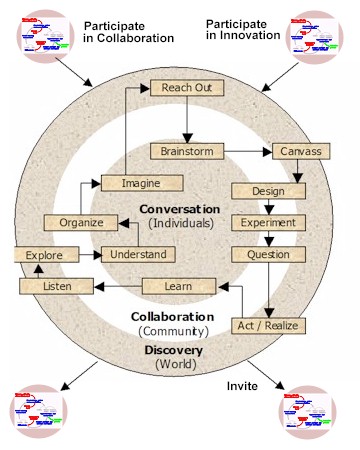
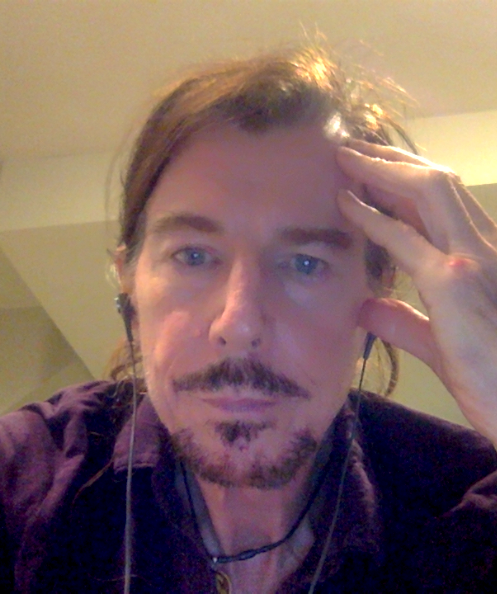
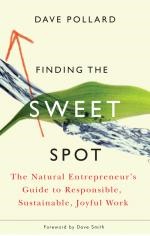
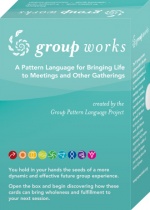

Great article. I have conceived (and wish to develop) a means of allowing music and video content to be combined, remixed, annotated, censored, edited and shared, **without violating copyright**. I believe that it is a timely idea and has many commercial possibilities, but am unsure what to do next. Ideally, I would like to hand this idea off to a company that deals in content creation, distribution or playback.There must be a firm out that that knows the ins and outs of IP development, from concept to licensing. I already have a couple patents, which have resultied in $0 value. I am not keen on doing a bunch more patent paperwork for nothing in return.Any suggestions?
I am interested in your observations on the why there is so little innovation in most organisations today (as someone who has tried to sell innovative ideas from within organisations for several years unsuccesfully). I agree absolutely that it’s not for lack of creative talent within organisations, or information washing around both within and around the organisation. I agree that organisations are not set up to ‘tap’ that creativity, but that is more a symptom than a cause, and the cause I think gets back to the other point you mention – managements lack of trust, and the ‘steady as she goes attitude’ that says ‘if it aint broke don’t fix it’. I’ve come to the view that organisations have a natural (and almost inevitable) ‘inertia’ which is (paradoxically) driven by their success. Whatever works very well (some new or cheaper product, or a captive market) tends to, over time, make the the organisation risk-averse. This flies in the face of logic (and experience), but while I agree that organisations are ‘not stupid’, they are not always rational.Of course the organisation ‘in crisis’ should (if one accepts this argument)be far more willing to ‘innovate’ their way out of trouble – except that organisation crisis usually results in a very standard response of shedding staff. Time and time again I’ve seen this process ‘depopulate’ organisations of the very best creative talent – even seen organisations ditch these people overboard deliberately as they were seen as ‘non-core’.At the end of the day I think if we are look for innovation we’ll find it in the wreckage of companies that have collapsed, and in start-up companies – situations where individual talent and creativity have a chance to ‘stand out’ from corporate mediocracy and aversion to change. While I have written about how the cycle of birth and death of organisations is ‘healthy’, I have also seen the real damage this process (if not planned for) inflicts on individuals within these organisations. So, my ambition is to discover strategies for fostering creativity (and acceptance of creativity) within organisations, as a ‘second thread’ to getting organisations to accept (and plan for (and actually encourage)) their own demise and transition to something ‘new’.On the creativity side, I’ve come round to a view that there are three ways of making it work. Firstly (and most improbably) persuade the company that it’s to the economic advantage to ‘become collaboratively creative’. Secondly to use technology to connect your people together ‘outside’ of the official chanels and let them create an ‘informal’ organisation inside the organisation which may have the capacity to be innovative, and sufficient ‘collective influence’ to get their concepts an ‘airing’ in front of the formal organisation’s management. Thirdly, get the customers to drive the change. This last concept may seem to run counter to the notion of the ‘happy customer’ driving the ‘no change’ argument within organisations, but they are both recognition of the power of customers to drive organisational behaviour, and the line between ‘no change’ and ‘innovate’ is simply a matter of getting the customer to redefine their expectations.
Kevin: My suggestion would be to start with the independent artists, rather than the IP company or media aggregators. The artists ‘get’ the value of this, and if you have a tool that will help them, they will be most motivated to find a way to get it to market.John: This is Clay Christensen’s view too. No one is looking at the human side of this, though, which is only visible when you get above the level of a single organization. To me the underemployment of the ‘creative class’ especially in North America is a colossal tragedy, a human waste on a grand scale. But the evolved ‘market’ economy can’t see it as a problem, and the opposition in the US to intervention in the corporate realm of the economy prevents government from seeing it as a problem either. In that situation I don’t think even the best technology can do anything by itself. Your third option, starting with the customer, is the only option left. They are already voting with their feet, abandoning large uncreative corporate products in favour of personalized, customized, innovative solutions (at least when they can afford them). They need to realize, via organizations like Consumers Union, that they do have the power to bring about this change.